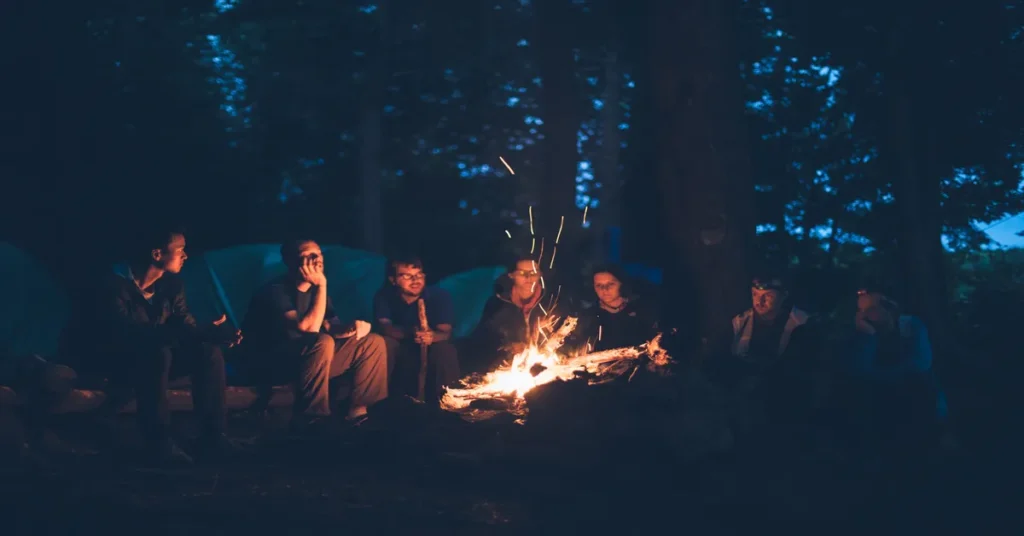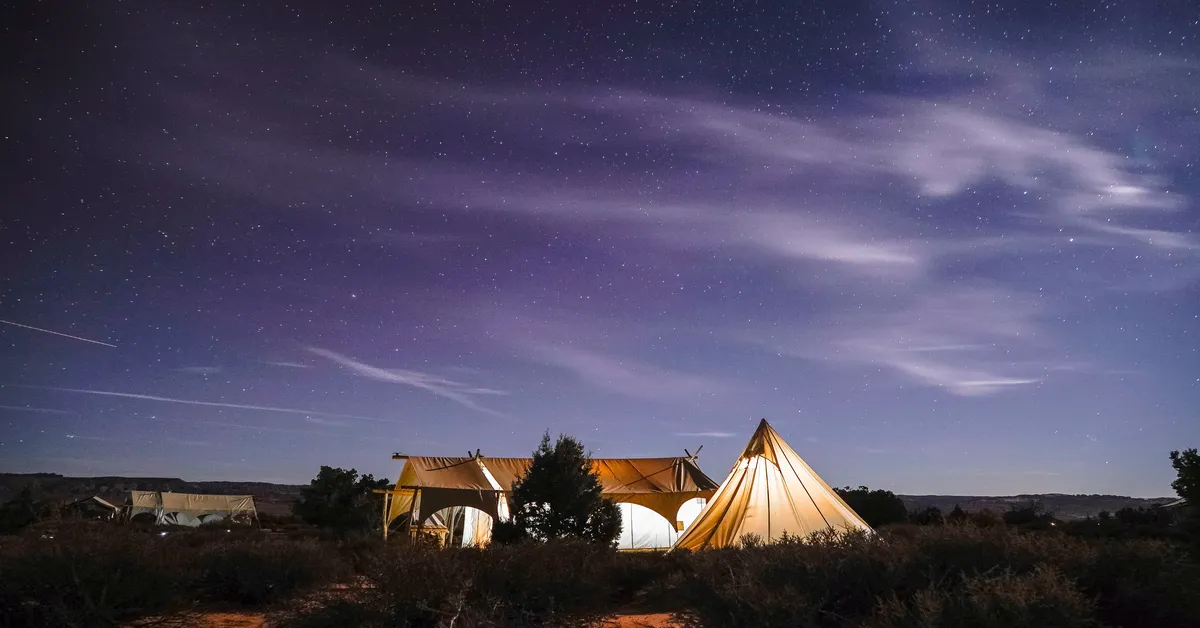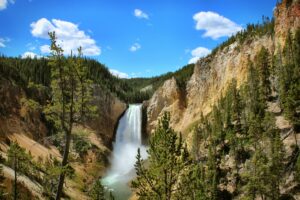Camping Tent Setup Ideas: Tips and Tricks for a Stress-Free Camping Experience
Tent camping is a wonderful way to enjoy the great outdoors and spend quality time with family and friends. However, setting up a tent can be a daunting task, especially for those who are new to camping. With so many different types of tents and camping gear available, it can be overwhelming to figure out the best way to set up your campsite.
That’s why we’ve put together a list of camping tent setup ideas to help make your next camping trip a success. From choosing the right campsite to setting up your tent and organizing your gear, we’ve got you covered. Whether you’re a seasoned camper or just starting out, these tips and tricks will help you create a comfortable and functional campsite that you’ll love.
Looking for more Camping ideas, like Van camping? Check out our posts about different styles of camping!
Camping Styles: different Camping Tent Setup Ideas
When it comes to camping, there are many different styles to choose from. From roughing it in a tent to enjoying the luxurious amenities of glamping, there’s something for everyone. For our tent camping setup collection, we’ll explore some of the different camping styles available.
Glamping, short for glamour camping, is a new trend that has taken the camping world by storm. It combines the best of both worlds – the great outdoors and luxury accommodations. Glamping sites often offer amenities such as comfortable beds, electricity, running water, and even hot tubs. It’s a great option for those who want to experience nature without sacrificing comfort.
Of course, not everyone wants to camp in luxury. Some prefer the simplicity of traditional tent camping. This style of camping requires more preparation and planning, but it can be very rewarding. It’s a great way to disconnect from technology and enjoy the natural world around us.
No matter what your camping style is, it’s important to have the right gear. A sturdy tent, comfortable sleeping bags, and a reliable camping stove are essential for any camping trip. And don’t forget to bring plenty of food, water, and other supplies to keep you comfortable and safe.
Overall, there are many different camping styles to choose from. Whether you prefer the luxury of glamping or the simplicity of traditional tent camping, there’s something for everyone. So pack your bags, grab your gear, and get ready to enjoy the great outdoors!
Understanding the Basics of Tent Setup
When it comes to camping, setting up your tent is an essential part of your outdoor adventure. A well-pitched tent provides shelter, privacy, and a comfortable place to rest after a long day of hiking, fishing, or exploring. In this section, we’ll cover the basics of tent setup, including the types of tents available and the essential tools you’ll need to get started.
Types of Tents
Before you can start setting up your tent, you’ll need to choose the right type of tent for your needs. There are several different types of tents available, each with its own advantages and disadvantages. Here are some of the most common types of tents:
| Type of Tent | Description |
|---|---|
| Dome | Dome tents are freestanding and easy to set up. They offer good headroom and stability in windy conditions. |
| Cabin | Cabin tents are spacious and provide plenty of room for gear and people. They are ideal for car camping and family trips. |
| Backpacking | Backpacking tents are lightweight and compact, making them easy to carry on long hikes. They are designed for one or two people and offer minimal headroom. |
| Pop-up | Pop-up tents are easy to set up and take down. They are ideal for festivals, car camping, and backyard camping. |
Essential Tools for Tent Setup
Once you’ve chosen the right type of tent for your needs, you’ll need to gather the essential tools for tent setup. Here are some of the most important tools you’ll need:
- Tent: Obviously, you’ll need a tent to set up.
- Tent stakes: Tent stakes are used to anchor the tent to the ground.
- Tent poles: Tent poles are used to support the tent and keep it upright.
- Guy lines: Guy lines are used to stabilize the tent in windy conditions.
- Hammer or mallet: A hammer or mallet is used to drive the tent stakes into the ground.
- Ground cloth: A ground cloth is placed underneath the tent to protect it from moisture and debris.
- Rainfly: A rainfly is placed over the tent to keep it dry in wet conditions.
With the right tools and a little bit of practice, setting up your tent will become second nature. Just remember to choose the right type of tent for your needs and gather all the essential tools before you head out on your next camping adventure.
Step by Step Guide to Tent Setup
Camping is a great way to enjoy the outdoors and relax with family and friends. One of the most essential aspects of camping is setting up your tent. In this section, we will provide you with a step-by-step guide to tent setup to help you get started on your next camping trip.
Choosing the Right Spot
The first step in setting up your tent is to choose the right spot. Look for a flat and level area that is free from rocks, sticks, and other debris that could damage your tent. Make sure the ground is dry and not prone to flooding. Also, consider the direction of the wind and position your tent accordingly.

Laying the Groundsheet
Before pitching your tent, lay down a groundsheet or tarp to protect the bottom of your tent from moisture and abrasions. Make sure the groundsheet is slightly smaller than the tent to prevent rainwater from pooling underneath.
Pitching the Tent
Now it’s time to pitch your tent. Start by assembling the tent poles and sliding them through the sleeves of the tent. Then, stake down the corners of the tent and adjust the tension of the guy lines to make sure the tent is taut. If your tent comes with a rainfly, attach it to the top of the tent to protect against rain and wind.
Securing the Tent
Finally, secure your tent by staking down the guy lines and adding extra stakes to the corners of the tent. Make sure the stakes are firmly in the ground and the guy lines are taut to prevent the tent from collapsing in windy conditions.
By following these simple steps, you can set up your tent quickly and efficiently, leaving you more time to enjoy the great outdoors. Happy camping at Silverwood Lake!
Advanced Tent Setup Ideas
When we go camping, we want to have a comfortable and enjoyable experience. However, sometimes the weather doesn’t cooperate, or we want to have more space to ourselves. In these situations, advanced tent setup ideas can come in handy. Here are some camping tent setup Ideas that we can try to make our camping experience even better.
Tent Setup for Bad Weather
When we are camping, we can’t control the weather. But we can prepare for it. One way to do this is to set up our tent in a way that will keep us dry and safe in case of rain or wind. Here are some tips:
- Choose a high and dry spot for our tent, away from any potential flooding areas.
- Use a rainfly to cover the tent and provide extra protection from the rain.
- Stabilize the tent with additional guy lines and stakes to prevent it from blowing away in the wind.
- Use a groundsheet under the tent to keep the inside dry and prevent moisture from seeping through the floor.
- Make sure all zippers and seams are properly sealed to prevent water from leaking inside.
Multi-room Tent Setup
If we are camping with a group of friends or family, a multi-room tent can provide more privacy and space for everyone. Here are some tips for setting up a multi-room tent:
- Choose a tent with separate rooms or dividers that can be easily installed.
- Assign each room to a specific person or group of people to keep things organized.
- Use a groundsheet under the tent to protect the floor from dirt and moisture.
- Set up a common area outside the tent for cooking, eating, and socializing.
Hammock Tent Setup
For a unique and comfortable camping experience, we can try setting up a hammock tent. Here are some tips:
- Choose a sturdy and reliable hammock that can support our weight.
- Use a tarp or rainfly to protect us from the rain and wind.
- Use a sleeping bag or blanket to keep warm at night.
- Set up the hammock between two trees or other sturdy structures that are at a safe distance apart.
By trying out these advanced camping tent setup ideas, we can make our camping experience more comfortable, enjoyable, and memorable.

Tips and Tricks for Efficient Tent Setup
Setting up a tent can be a daunting task, especially for first-time campers. However, with the right techniques and some practice, you can set up your tent quickly and efficiently. Here are some tips and tricks that we’ve learned over the years to make the process easier.
Speedy Setup Techniques
When it comes to setting up your tent, time is of the essence. Here are some techniques that can help you set up your tent quickly:
- Practice at home: Before you head out on your camping trip, practice setting up your tent at home. This will help you become familiar with the process and identify any issues that you may encounter.
- Choose a flat and level site: Look for a flat and level site to pitch your tent. This will make it easier to set up your tent and ensure that it is stable.
- Use a footprint: A footprint is a groundsheet that goes under your tent. It can help protect your tent from rocks and other debris, and it can also make it easier to set up your tent.
- Divide and conquer: If you’re camping with a group, divide the tasks of setting up the tent. One person can assemble the poles, another can insert them into the tent, while another can stake the tent down.
- Use color-coded poles: If your tent comes with color-coded poles, use them. This can make it easier to identify which pole goes where and reduce the setup time.
Maintaining Your Tent After Setup
Once you’ve set up your tent, it’s important to maintain it properly. Here are some tips to help you keep your tent in good condition:
- Keep it clean: Sweep out your tent regularly to remove any dirt and debris. This can help prevent mold and mildew from forming.
- Avoid sharp objects: Be careful not to place sharp objects, such as rocks or sticks, near your tent. They can puncture the fabric and cause damage.
- Use a groundsheet: In addition to using a footprint, consider using a groundsheet inside your tent. This can help protect the floor from wear and tear.
- Dry it out: If your tent gets wet, make sure to dry it out before packing it away. This can help prevent mold and mildew from forming and extend the life of your tent.
By using these tips and tricks, you can set up your tent quickly and efficiently and keep it in good condition for years to come.
What we recommend
Setting up a camping tent can be a fun and easy experience if you plan ahead and follow some basic guidelines. First, choose a suitable campsite with a flat and open area that is free of vegetation and has good drainage. Prioritize setting up your tent first, and make sure it is in an area that is shaded and wind-buffered.
Next, make sure you have all the necessary equipment and supplies, such as a ground tarp, stakes, guylines, and a mallet. It’s also important to bring a good quality tent that is appropriate for your needs, whether it’s a lightweight backpacking tent or a spacious family tent.
When setting up your tent, follow the manufacturer’s instructions carefully and make sure it is properly staked down and secured. Use guylines to provide additional stability in windy conditions.
Inside the tent, organize your gear and sleeping area to maximize space and comfort. Use storage pockets and gear lofts to keep your belongings off the ground and within easy reach.
Finally, don’t forget to leave your campsite better than you found it. Pack out all your trash and leave no trace of your visit. By following these simple guidelines, we can all enjoy the great outdoors and protect our natural environment for future generations.
FAQ- Camping Tent Setup Ideas
What are the best camping setups for families?
When camping with family, it’s important to have a spacious and comfortable setup. A larger tent with multiple rooms or dividers can provide privacy and separate sleeping areas. You can also consider setting up a separate dining or play area outside the tent. Bringing along a portable stove or grill can also make mealtime easier and more enjoyable.
What are some camping tent setup ideas for a comfortable camping experience?
For a comfortable camping experience, consider adding some amenities to your camper setup like a portable shower or toilet, a comfortable mattress or sleeping pad, and a portable fan or heater. You can also bring along a camping stove or grill for easy meal prep and a cooler for storing food and drinks.
What are some permanent campsite setup ideas for long-term camping?
For long-term camping at a permanent campsite, consider setting up a more permanent structure like a canvas tent or yurt. You can also add more permanent features like a raised deck, outdoor kitchen, or fire pit. Consider investing in solar panels or a generator for off-grid power, and install a rainwater collection system for sustainable water use.
We’d love to hear about your Camping Tent Setup Ideas. Got any tips? Please let us know in the comments!




